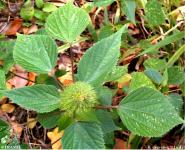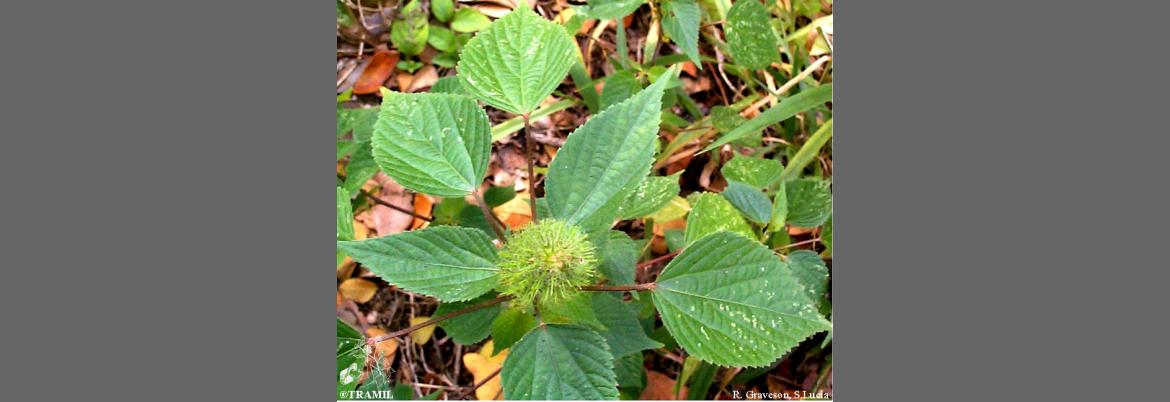1 WENIGER B, ROUZIER M, 1986
Enquête TRAMIL. Service Oecuménique d'Entraide SOE, Port au Prince, Haïti.
2 GERMOSEN-ROBINEAU L, GERONIMO M, AMPARO C, 1984
Encuesta TRAMIL. enda-caribe, Santo Domingo, Rep. Dominicana.
3 WENIGER B, SAVARY H, DAGUIHL R, 1984
Tri phytochimique de plantes de la liste TRAMIL. Faculté de Médecine, Université de Haïti, Port au Prince, Haïti.
4 HEGNAUER R, 1973
Chemotaxonomy der Pflanzen. Basel, Schweiz: Birkhauser Verlag, 6:882.
5 HOSTETTMANN K, LEA P, Eds., 1987
Biologically active natural products. Oxford, England: Oxford Science Publications.
6DEL ROSARIO PEREZ R, WENIGER B, 1988
Actividad de Acalypha alopecuroides sobre intestino aislado. Informe TRAMIL. Universidad de Estrasburgo, Estrasburgo, Francia.
7 MORON F, BETANCOURT J, PINEDO Z, BOUCOURT E, 2000
Efecto de hoja fresca deAcalypha alopecuroides Jacq. en el tránsito intestinal de ratones in vivo. Informe TRAMIL. Laboratorio Central de Farmacología, Facultad de Ciencias Médicas “Dr. Salvador Allende”, La Habana, Cuba.
8 LE GRAND A, WONDERGEM PA, 1986
Activités antimicrobiennes et études bibliographiques de la toxicologie de dix plantes médicinales de la Caraïbe. Informe TRAMIL. Dép. de Pharmacognosie, Universités de Groningen & Leyden, Groningen & Leyden, Hollande.
9SOUZA BRITO A, 1995
Toxicidad aguda deAcalypha alopecuroides. Informe TRAMIL. Dep. de Fisiología y Biofísica, Universidad de Campinas, Campinas, Brasil.
10 MARTINEZ MJ, BETANCOURT J, LOPEZ M, MOREJON Z, BARCELO H, LAINEZ A, MONTES ME, REGO R, BOUCOURT E, MORON F, 2000
Toxicidad aguda clásica de hoja fresca de Acalypha alopecuroides Jacq. Informe TRAMIL. Laboratorio Central de Farmacología, Facultad de Ciencias Médicas “Dr. Salvador Allende”, La Habana, Cuba.
11MARTINEZ MJ, BETANCOURT J, LOPEZ M, MOREJON Z, BARCELO H, LAINEZ A, MONTES ME, REGO R, BOUCOURT E, MORON F, 2000
Toxicidad aguda de hoja fresca de Acalypha alopecuroides Jacq. en el modelo de clases tóxicas agudas. Laboratorio Central de Farmacología, Facultad de Ciencias Médicas “Dr. Salvador Allende”.
12 POULTON J, KEELER R, TU T, Eds., 1983
Handbook of natural toxins 1.New York, USA: Marcel Dekker, p117.
13 NAHRSTEDT A, 1987
Recent developments in chemistry, distribution and biology of the cyanogenic glycosides. In: Hostettmann K, Lea P, Eds. Biologically active natural products. Oxford, England: Oxford Science Publications. p167-184,213-234.
14 ARGEHEORE EM, AGUNBIADE OO, 1991
The toxic effects of Cassava (Manihot esculenta Grants) diets on humans: a review. Hum Toxicol 33(3):273-275.
















